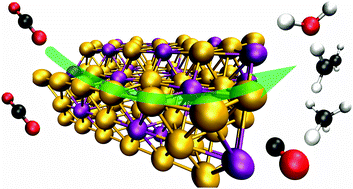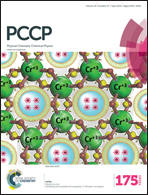Bifunctional alloys for the electroreduction of CO2 and CO†
Abstract
We use density functional theory to study the reduction of CO2 and CO to hydrocarbons through a formyl pathway on (111) and (211) facets of L12 alloys with an A3B composition. We find that several alloys may reduce the thermodynamic overpotential for CO reduction by more than 0.2 V compared to a copper step, however, these alloys are most often rather unstable in aqueous environment or have low alloy formation energies and may be susceptible to segregation destroying the active sites. Strategies to improve alloy stability against corrosion or segregation would likely be needed in order to realize the full potential of these alloys.

- This article is part of the themed collection: 2016 most accessed PCCP articles

 Please wait while we load your content...
Please wait while we load your content...